Philippine Independence Day: What Does it Really Signify?
More than a century ago, our forefathers fought against one of the most powerful empires of that era, Spain, to gain freedom after having been colonized for 333 years. After 121 years, we once again celebrate on this day, June 12, the declaration of independence by the then newly-established Philippine Republic under President Emilio Aguinaldo in 1898 in Kawit, Cavite.
Let us retrace the prior events leading to this cherished chapter in our nation’s history.
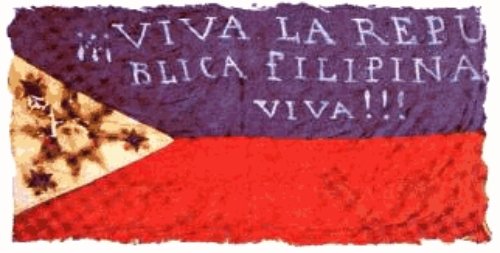
Aug. 30, 1896 – The Philippines revolted against the Spanish regime under the leadership of Andres Bonifacio, who had established the secret organization Katipunan. His forces attacked but failed to capture the Spanish gunpowder depot and water reservoir in San Juan del Monte, a Manila suburb. Other cities and towns soon joined the uprising.
The first eight provinces to revolt against Spanish rule were Manila, Laguna, Bulacan, Batangas, Cavite, Pampanga, Tarlac, and Nueva Ecija. Governor-General Ramon Blanco declared Martial Law over those places and exiled numerous suspected rebels, either to their colonies in the Caroline Islands or in Africa. The uprising gained more territories in spite of repressions and executions. Meanwhile, the Spanish army expected immediate reinforcements to stem the growing tide of rebellion. By January 1897, Governor Polavieja had 12,000 soldiers to maintain his rule over Luzon Island.
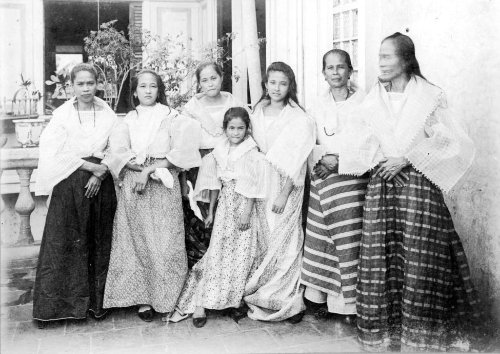
March 1897 – The Spaniards had driven back the rebels from the province of Cavite after having retaken the crucial towns of Silang, Dasmarinas, Imus and Bacoor. On March 22, Bonifacio was ousted as leader of the revolution in favor of Aguinaldo. Bonifacio, the self-taught proletariat and revolutionary, lost to the more educated and influential Emilio Aguinaldo. By May, their rivalry ended up with the summary execution of the former by Aguinaldo’s men for treason.
December 14, 1897 – Escaping the Spanish onslaught, Aguinaldo’s forces retreated to Bulacan where he established the Biak-na-Bato Republic. They continued to engage the enemy in Central Luzon. Failing to quell the rebellion, Gov. Rivera acceded to a truce, labeled the Pact of Biak-na-Bato, allowing Aguinaldo and his officers to be exiled to Hong Kong (with $800,000 in their pockets plus $900,000 for the people) and granting amnesty to surrendering revolutionaries. Other reforms were promised but never kept. Only $600,000 was delivered. The Spaniards rearrested and executed many Pilipinos. Aguinaldo decided to buy guns in Shanghai and Hong Kong in his bid to resume the revolution.
May 1, 1898 – Commodore Dewey’s navy squadron, sailing from Hong Kong, entered Manila Bay with instructions to engage the Spanish fleet guarding Manila, specifically to “capture vessels or destroy” and to “use utmost endeavors”. Dewey had 9 vessels which succeeded in sinking 8 antequated Spanish vessels. (The previous month, USA had declared war against Spain for sinking USS Maine.) He blockaded the city with his fleet since he had no troops to occupy it.
Governor-General Basilio Agustin, commander of the Spanish army garrison in Manila, had a total complement of 13,332 soldiers, including 4,950 Pilipinos. Although he offered to surrender to the Americans, Dewey declined because he had no land forces. Agustin had expressed his preference to surrender to him rather than to the “undisciplined insurgents, who, I feared, might wreak their vengeance upon the Spaniards and indulge in a carnival of loot”.
Hearing of Dewey’s victory in Manila, the US Army sent the 8th Army Corps under Gen. George Wesley Merritt to reinforce Dewey’s fleet.
May 19, 1898 – Aguinaldo and his men arrived in Manila to resume command over the rebel forces. While in Hong Kong, he had been contacted by US envoys of their government’s plan to help his country gain independence from Spain. Dewey himself had expressed to Aguinaldo “that there was no occasion . . . to entertain any doubts whatever about the recognition of the Independence of the Philippines by the United States”.

Pilipino exiles in Hong Kong, 1898, with Emilio Aguinaldo (sitting, 2nd from right)
May 24, 1898 – Aguinaldo established an interim dictatorial-government, with plans to proclaim the independence under a democratic form of government. Later that month, Dewey was “ordered by the U.S. Department of the Navy to distance himself from Aguinaldo” to avoid any compromising concessions to the Philippine forces. Dewey was clearly waiting for his reinforcements to allow him to gain superiority over the rebels. He referred to Pilipinos as “Indians” and assured Washington, D.C. that he when he entered Manila, he would “keep the Indians out”. (The Indian-giver, thus, promised and delivered. During U.S. Senate hearings later, Admiral Dewey admitted, “I never treated him (Aguinaldo) as an ally, except to assist me in my operations against the Spaniards.”)
May 25-June 29, 1898 – Several expeditions of US Infantry and naval reinforcements sailed from Presidio, California to Manila to augment Dewey’s forces and stake Uncle Sam’s claim over the Philippine archipelago.
June 1898 – Without any help from the Americans, Aguinaldo’s army of 12,000 soldiers had overran Spanish garrisons in Cavite and around Manila then proceeded to besiege the capital with 20 kilometers of trenches. Cutting the water supply and escape routes, the “Indians” had the enemy cornered. The whole archipelago, except for Mindanao, was under the new republic’s control. It was a victory within arm’s reach.
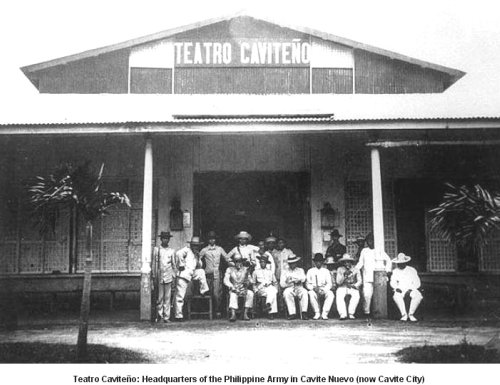
June 12, 1898 – Trusting the benevolence of the Americans, Emilio Aguinaldo declared the national independence of the Filipinos and established the Philippine Republic “under the protection of the mighty and humane North American Union.” (Months later, through his adviser’s (Apolinario Mabini) urging, the declaration was redefined without that compromising clause.)
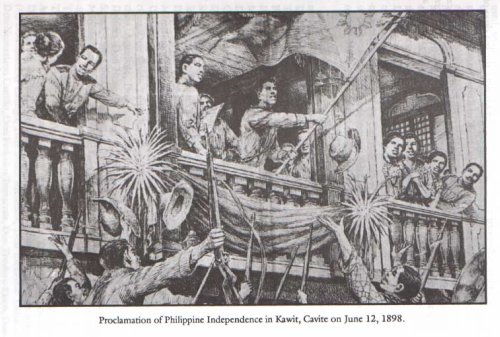
August 9, 1898 – A formal joint demand for the surrender of Manila was made, considering the hopeless situation of the Spanish forces. Gov. Gen. Fermín Jaudenes, who had replaced Basilio de Agustin as Governor-General on August 4, entered into a secret agreement with the American military commanders regarding Manila’s capture. The Spaniards would surrender only after they had shown some token of resistance and at a predetermined occasion. The age-old Castilian pride (amor propio) had to be preserved, along with seeking assurance that no bombardment of the city would occur and that “vengeful” Filipinos would not take part. (The Indian-giver had another fork-tongued accomplice.)
The rest of this factual retelling of the Philippine Revolution against the Spanish and against the Americans afterward has, therefore, put the significance of June 12, 1898 as our Independence Day under a cloud. For the Americans claim they “granted” us independence on July 4, 1945 – our other (and former) Independence Day before President Diosdado Macapagal changed it. The first date, rightfully and justifiably, signified freedom from Spanish rule. However, the facts show that dark forces merely put that “independence” within a seemingly Hollywood-directed show where the real winner and conqueror was a certain Magician wielding the powers to mesmerize, manipulate, deceive and to victimize.
Although our ancestors were sincere and convinced of their moral and legal right to rule themselves, the greater might of a new occupying military force, plus its deceitful psy-war and political machinations, snatched our independence even before we could truly taste it. It was merely a flash-in-the-pan vision of independence. It freed us from 333 years of Spanish rule; that is all. But we fell into a more formidable and more cunning colonizer.
The second date, therefore, was a belated promise of freedom (in Spanish, it would read: consuelo de bobo) by the same Actor-Magician who spent half of a century fleecing these islands of its wealth and its cultural identity, thus, continuing the three-century colonial subjugation of a people who had once lived and thrived as a prosperous and independent archipelago for more than two thousand years.
We fail to appreciate that victory in wars, declarations and decrees do not decide genuine freedom. Yes, they do help us cherish the rights and freedoms we savor today. They help us become one as a people, united in principles and truths that have governed and sustained civilizations for millennia. Whatever and wherever we are today as a nation, we still have so much to discover and to reestablish as to the real heritage we have received as a naturally-blessed archipelago and a culturally-diverse people. The only thing that can stop us from achieving our destiny is our refusal to seek and to accept our God-given roles as His stewards of His Truth. However, much of that Truth that can release us from our own complacency and ignorance remains hidden from us through the centuries of deception, magic, mystification and victimization that still enslave us in body, mind, soul and spirit.
Are we saying we are not truly independent as a nation? We are an independent nation only if the individual parts are free. If many or majority of the parts remain beholden to the lies and deception that enslaved us in the past, then our nation remains a vestige of our colonial past. We have not learned how to harness freedom in order to establish a truly free community even at the lowest levels. We do not need to see troops of the guardia civil or G.I. Joe’s marching in our streets as evidence of our enslavement. The way we think, speak and live will tell others how free we are as a nation.
Does having an Independence Day prove we are truly independent? It does if we begin to see the real meaning of freedom and where (and Whom) it comes from. Let us illustrate with the history we are all familiar with.
Circa 1450 BC – When Yahuwah decided to visit humans in order to show He lives and cares for us, individually and as a nation, He went to the Hebrews in Egypt. War, although it still had centuries to evolve into a formidable machinery or tool for conquering peoples and nations, did exist as a force to secure people and to keep enemies at bay. Pharaoh had a mighty army, and Egypt, at that time, was a rich, great and powerful nation. For Hebrews who were mere shepherds or farmers, being favorably taken into the custody of the Egyptians during a famine through Joseph’s benevolent administration of Egypt was virtually and actually a miracle only Yahuwah could have conjured.
Circa 1030 BC – Fast forward 420 years. Hebrews had become slaves in Egypt and Yahuwah finally decided to free them. Did He use war or physical might to accomplish His goal? No! He would be human and not God. Count the miracles He performed and be awed again. In His final coup de grace (works both ways for the Egyptians as well as for the Hebrews), He led the Hebrews into a corner where Pharaohs army saw only certain victory: between the churning sea and the vicious soldiers. Moses cried: Fear not. Stand still and see the salvation that Yahuwah will accomplish for you TODAY! (Ex. 14:13)
Did Moses have an army or a Katipunan to set his people free from certain annihilation? The prophet had already seen and talked to Yahuwah on the mountain. He knew better than anyone else how powerful His God was compared to the gods of the Egyptians. The score stood at 10-0; how could he lose the final game?

And so without a sword swung (bayonet plunged?), an arrow shot (rifle fired?) or a chariot driven (tank launched?), Yahuwah destroyed the whole Egyptian army. Myth?! Of course, since many people only see power coming from the barrel of a gun. Or from political or military position. But let us disabuse them of this belief and prove Yahuwah did visit His chosen nation in the present times and showed His unequalled might and incontrovertible presence. And, we must add, with perfect timing!
(For those who complain about this writer making long articles, be patient for once. It takes time to think and to write; please take time to read – and think, if that is not too hard.)
June 12, 1991 – Mt. Pinatubo, an “extinct” volcano in Zambales which last erupted more than 600 years before, showed restiveness that put the whole Island of Luzon in panic mode. Days before, steaming vents and bulging of the dome had been monitored by Phivolcs and the US Geological Services, convincing them of an imminent major eruption. The US Clark Air Force Base stationed in Angeles City had withdrawn its air assets on June 10 and also began evacuating personnel and vital equipment. Likewise, the US Naval Force in Subic Bay evacuated.
Practically, on this day, Philippine Independence Day, what political militants, insurgents and parliamentary dissidents failed to accomplish, Mt. Pinatubo succeeded in doing after 93 years to remove a colonizer’s military presence from Luzon and, it follows, from the archipelago. (On September 16, 1991, the Philippine Senate rejected the extension of the US Military Bases Agreement. It was during the term of President Joseph Estrada.)
June 15, 1991 – Mt. Pinatubo erupted at around 3 P.M. (right when I and two friends were cruising on North Luzon Expressway on our way to Baguio City). Near Angeles City, the closest we got to the fiery and angry Apo Namalyari (the Aetas’ mountain god “who is able” or “who owns”), the surroundings became as dark as night, while sticky ashfall and pebble-sized pyroclastic materials pounded our car. With a tropical cyclone passing directly over the crater, all hell broke loose! There was lighting, earthquake, a storm and deep darkness! It reminded me of the Hebrews’ encounter with Yahuwah at Mt. Sinai. Was I experiencing a myth as well? No, Yahuwah spoke through an angry mountain. Not to listen or heed would be foolish. (Amos 3:4-8; Psalm 18:7-43)
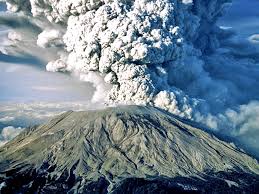
So there, Yahuwah did visit our nation at a time and through a world-changing cataclysm that we have simply failed to recognize as an affirmation of our real freedom we can have by following His ways – not the ways of this world or the world powers. Yes, they are at it again. They are back and playing their wild, deadly games in our front yard. Who is afraid of them? You remember what Moses said?
Let them display or rattle their sabers — their battleships, their fighter planes and their aircraft carriers – as much as they want. Remember Egypt! The Pacific Ocean and West Philippine Sea separate us from these marauding nations. They wish, as global powers are wont to do, to enslave us once more and take the wealth that Yahuwah had given to our people. Old habits, old urges.
Let them be. When the time comes, the seas are deep enough to cover all their progressive mainlands. Will that include this archipelago? Maybe. End-times are somewhat difficult to describe from where we stand. One thing is for sure: The Truth will set us free. And if we are truly and perfectly free, there is no more fear.
June 12, 2019 – Real freedom begins within us. Only the Truth can set us free, individually and as a nation of Yahuwah.
Fear not! Stand still and see the salvation that Yahuwah will accomplish for you TODAY!
Reference: philippineindependence.htm
(Photo of Mt. Pinatubo and painting of Pharaoh’s army courtesy of www.google.com)
- Previous: PSHS Photo Scandal: The Loss of Innocence
- Next: A Bird’s Only Song